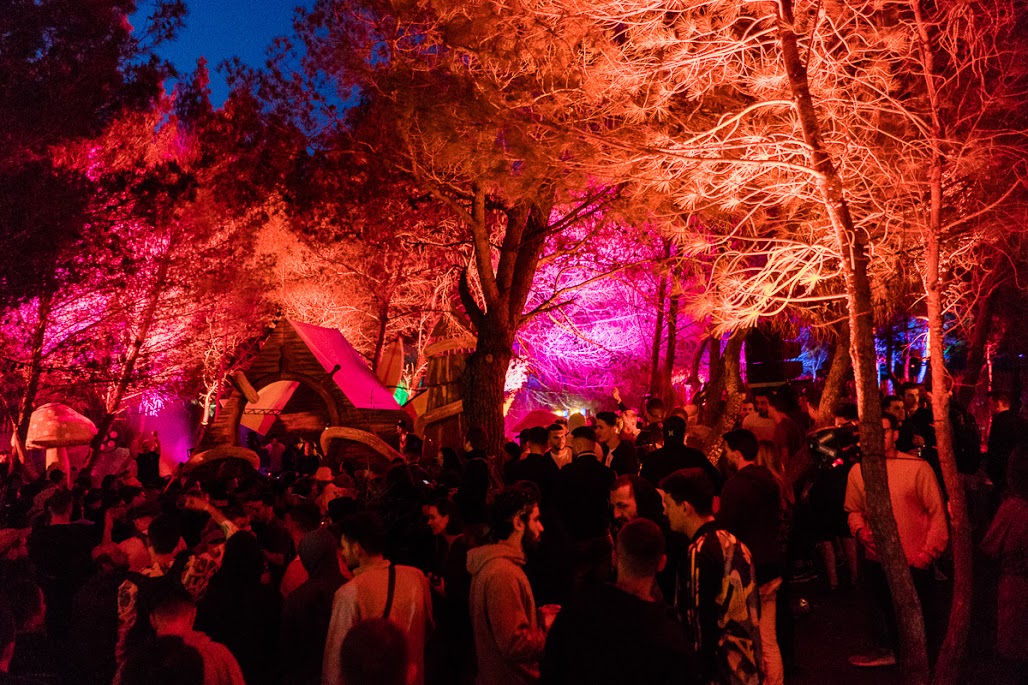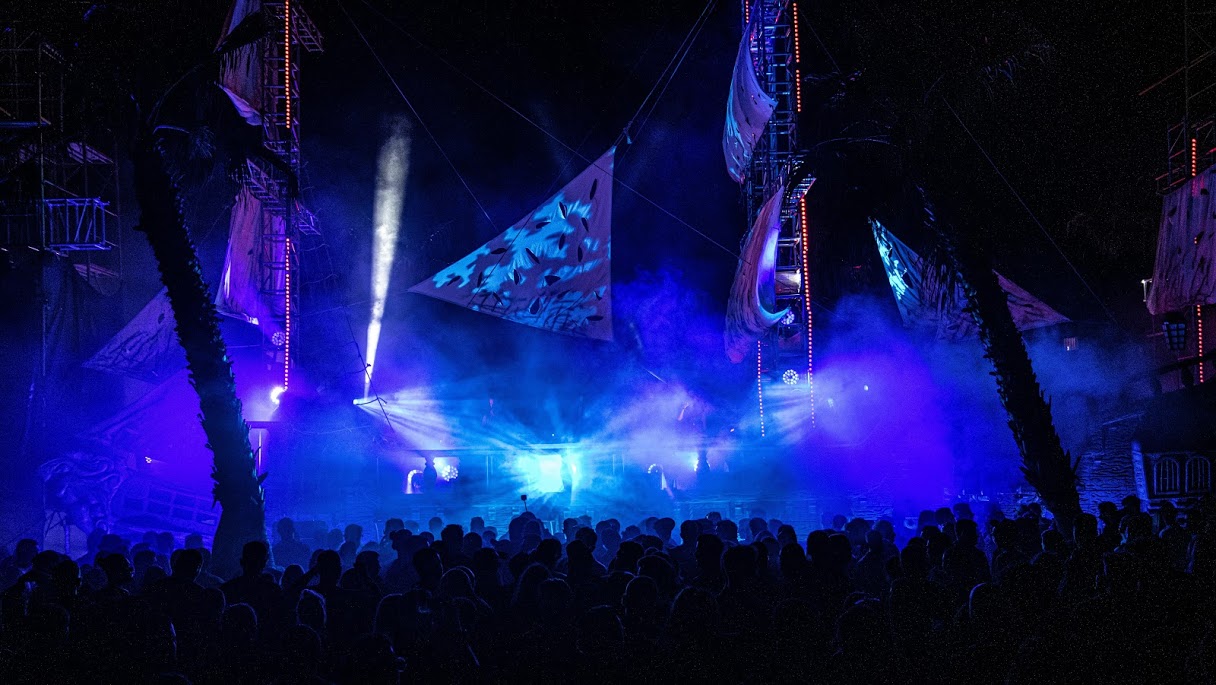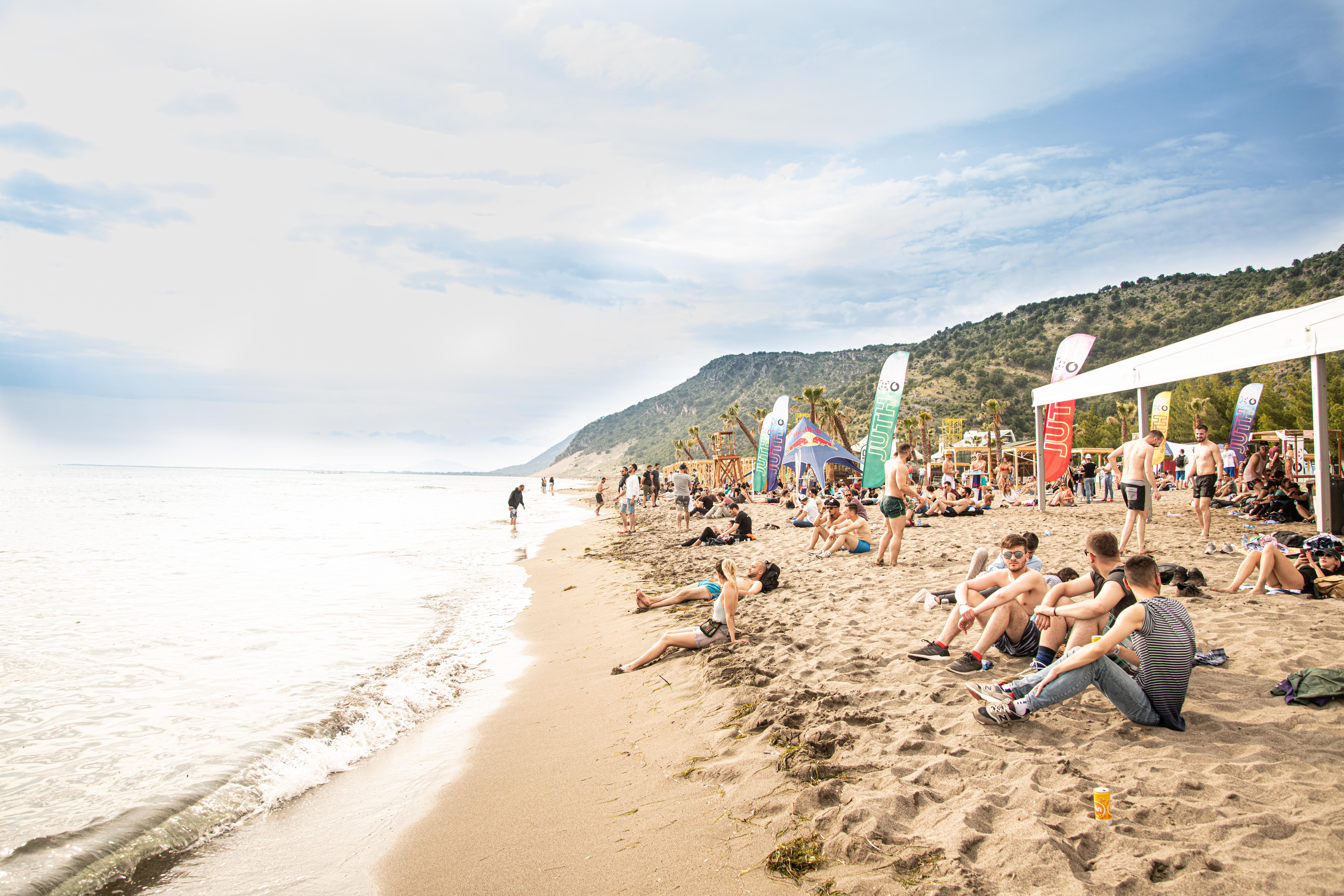Review: Unum Festival 2019
The event took place in Shengjin, Albania from Friday, May 31 to Monday, June 3.

Albania was closed off to tourism for much of the 20th century because of a brutal communist regime, but it’s now becoming a popular holiday destination. A key driver for this has been music, with a number of new events popping up to attract visitors from Europe and beyond. Last year Kala festival brought the likes of Peggy Gou, Moodymann, and Jayda G to the idyllic surroundings of Dhërmi Beach, and this year it was Unum’s turn to debut, bringing more of a minimal house and techno groove with the likes of Zip, Raresh, and Sonja Moonear, plus mainstream headliners such as Joseph Capriati and Luciano—and with them a flock of electronic music fans.
We arrived at the capital Tirana’s airport on Thursday afternoon, and after a quick one-hour transfer we had arrived at our beachside hotel—a complex surrounded by pine trees and with towering mountains as its backdrop. There were also restaurants, gardens, and multiple pools. The whole complex was reserved for tourists travelling to Unum, but some opted for Air BnBs. The first night saw some local DJ talent performing in the courtyard. It was an easy introduction that put us all in a good mood for the main event.
The Saturday began early, and access was easy, with no queues or anything of the sort. The music was divided between three stages: the Main Stage—in effect a large pirate ship, with the DJ on top of the deck in the middle—the Pine Stage, and Beach Stage, each getting progressively smaller. My eyes were firmly set on Pine, with its focus on groove and a lineup that included Sonja Moonear, Raresh, Digby, Dyed Soundorom, Margaret Dygas, and those in their orbit. Naturally, Main leant towards the bigger names—think Luciano, Joseph Capriati—but was bizarrely only open on Friday and Saturday nights, starting at 8pm.
The Beach Stage, meanwhile, was focused on the daytime, closing at 8pm, although organisers were kind enough to extend the curfew on the final evening. The likes of Traumer, Cesar Merveille, and Enzo Siraguza all looked a little out of place on a lineup of lesser-known names, most of which had come from Albania and nearby states such as Turkey and Greece. This all meant that there were no real clashes, which is so common at other events—Dekmantel springs to mind, with its stellar bookings and large daytime site—but it also meant that almost all my time was spent on one stage, Pine, the only venue where the music didn’t stop for the duration of the festival.

The first day was disappointing. Pine and Beach were both under way, and we spent some time at the former, found through a discreet little opening in the woods lit up by a trippy wooden structure, much like some of the stages at Gottwood, but the music wasn’t really catching my ears. Attending the smaller stages at festivals is often a good way to discover new talents but the crowds were sparse and the music was too heavy for the chilled out daytime vibe. These hours are an important part of any music event, especially so when the sun is shining, and the scheduling and booking could have been given more consideration. It felt like the event only really came to life at night. It wasn’t until Shaun Reeves’ evening set, the opening of the Main Stage, that it felt like the festival really began.
But the Visionquest man’s set meant this was all forgotten come evening. The wooden ship came to life and provided a dramatic backdrop for a set of warped techno and house cuts. The system was also impressive; even if you weren’t up close the bass still reverberated through you, seemingly wherever you stood.
After two hours, around 10 pm, we made our way over to Pine, which was now lit up by orange bulbs set up in the forest canopy. A slight lowering—a ditch of sorts—in the middle center facing the decks felt made for a dancefloor. We caught the end of Cap, and then up stepped Praslea for what turned out to be a slightly underwhelming two hours; I say this because the Romanian always delivers, but his apparent determination to go harder meant that he lost the subtleties that make you want to move. In contrast, Dyed Soundorom turned in one of the sets of the event. Joseph Capriati was closing at Main but Soundorom’s house classics, such as Boo Williams’ “Make Some Noise,” were too good to miss. We stayed there until the sun came up, and then moved over to Margaret Dygas at 7 a.m.
Does Dygas ever disappoint? Not in my books. The Perlon mainstay delivered another genre-jumping masterclass, mixing breaks with garage, house, and techno. I’ve always felt that Dygas’ intricate cuts sound best in an intimate setting and the early morning at the Pine proved my point. It was one of the highlights of the event, with the stage nicely bustling, but not yet too busy. As people arrived, however, and the crowd spread, it became apparent that the sound was only really good if you were on the dancefloor; anywhere else, where you had to be at the busier times, and you couldn’t really hear the high-end—even more important when you’re listening to DJs such as Dygas, Raresh, and Sonja Moonear, all of whom favor subtlety.

Saturday began with Traumer and Cesar Merveille at the Beach Stage, little more than a white gazebo on the beach. This was actually one of the best stages, certainly the only one really fitting for the day, and perfect for chilling with a couple of drinks and listening to some tunes. Traumer and Cesar Merveille were the only two who got the mood anywhere near right, but the draw of Digby over at Pine dragged me away after just one of their three hours. The Flash as a Rat head kept me there until 8 p.m., conveniently as the Main Stage was opening up for sunset and the Game Over crew, an Ibiza-based night that has built up quite a reputation over the years. Resident DJs Jamie Mannion and Adam Chappel did not disappoint with their blend of house and minimal rollers.
The real highlight of Saturday, however, came later with Raresh. The Romanian, whose housier selections just sound so much better when he’s without Rhadoo and Petre Inspirescu, drew the biggest crowd of the whole event. His set was typically filled with upbeat groove; I didn’t pick up too many outside of The African Dream’s 1994 classic “All The Same Family” and Romar’s “007” from Bucharest- based label Atipic. It was a classy performance from one of the best. Up next was Ion Ludwig for three hours of live jams, and Petre Inspirescu, who laid down his minimal rollers as only he knows how; scheduling his lighter groove for sunrise was a smart move.
In the midst of all this, I did catch some of the Main Stage, where Luciano, a DJ I’ve not seen for a good few years, played a mixture of European style tech-house. It was enjoyable but the music as a whole was too “big room.”
You have to sleep at some point and my natural needs required that I miss Vera B2B Laylla Dane and also DeWalta B2B Mike Shannon. But after a well-needed rest, I headed back for the end of Ferro and the start of Sonja Moonear, who was another highlight of the festival, although by this point it had started to rain heavily. The Pine Stage’s woodland clearing setting provided no cover so makeshift gazebos were used as canopies, meaning that everyone was vying for the same spot which led to a pretty congested and disjointed dancefloor. Ricardo Villalobos then played with Franco Cinelli, and was on good form despite the troubles overhead. He dropped Michael Nyman’s “Memorial” to really dramatic effect.
By 6 a.m., the rain had become so heavy that the festival was shut down. This was a bit deflating, partly because everyone had been in such good spirits but also because Craig Richard and Zip were still scheduled to play. With fingers crossed, we headed back to the hotel and waited for the rain to stop, only to be told that Zip was going to play in the basement club of our hotel complex. We made our way down to see the Perlon head spin some records to a crowd of no more than 200 people. Needless to say, it was a typically brilliant set, and the intimacy of the setting and the aforementioned weather problems made it that little bit more memorable.
I left Albania with a smile on my face, having had a fun-filled few days with some very good sets. Unum did many things well, especially for a first edition. The production and setting were exemplary, and the music too, although the scheduling and the bookings could be improved; perhaps a little too much focus was on formulaic, big names (although arguably necessary to spread the word of the event) and there’s a screaming need for diversity. If you look at the bigger picture, Unum has taken a big step in putting Albania on the map when it comes to electronic music events, and it feels like the organizers had at least one eye on supporting music in the region—even providing discounted tickets for locals. This will in turn help local talent to develop, and it also opens the door for future editions, which will continue to support the local economy. With some little modifications, Unum could become one of the next go-to summer festivals.
Photos by olirileyphotography / jukeboxpr and Valeriu Catalineanu at Unum Festival

